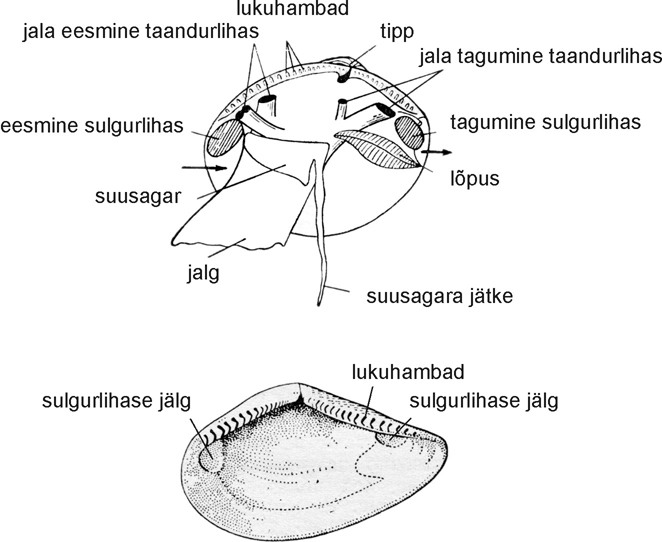
Karpide ehitus ja põhiterminid.
Karbid on vees elutsevad, kahest poolmest koosneva lubikojaga ja lameda kehaga limused. Karpidel ei ole eristunud pead ega lõugu. Külgedelt piiravad keha kaks nahakurdu (mantlikurrud), mis eritavad koja. Neil on 2 paari liistaklõpuseid ja liikumiselundina talitlev tugev lihaseline jätke - jalg. Kojapoolmeid ühendavad selgimiselt tugevad sulgurlihased ning enamasti ka hambakestest ja süvenditest koosnev lukk. Karpide kivistisi võib leida juba Kambriumi ladestust, väga levinud on nad aga Kesk- ja Uusaegkonna settekivimeis.